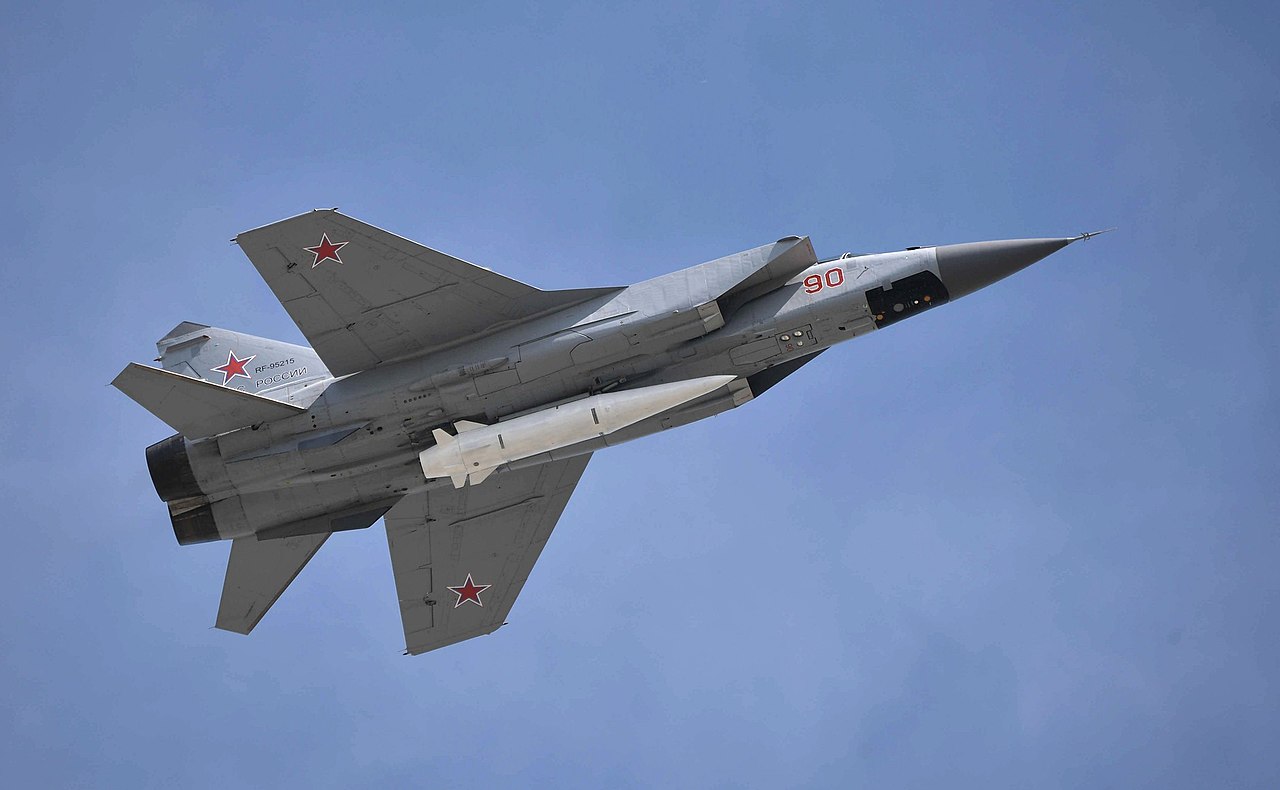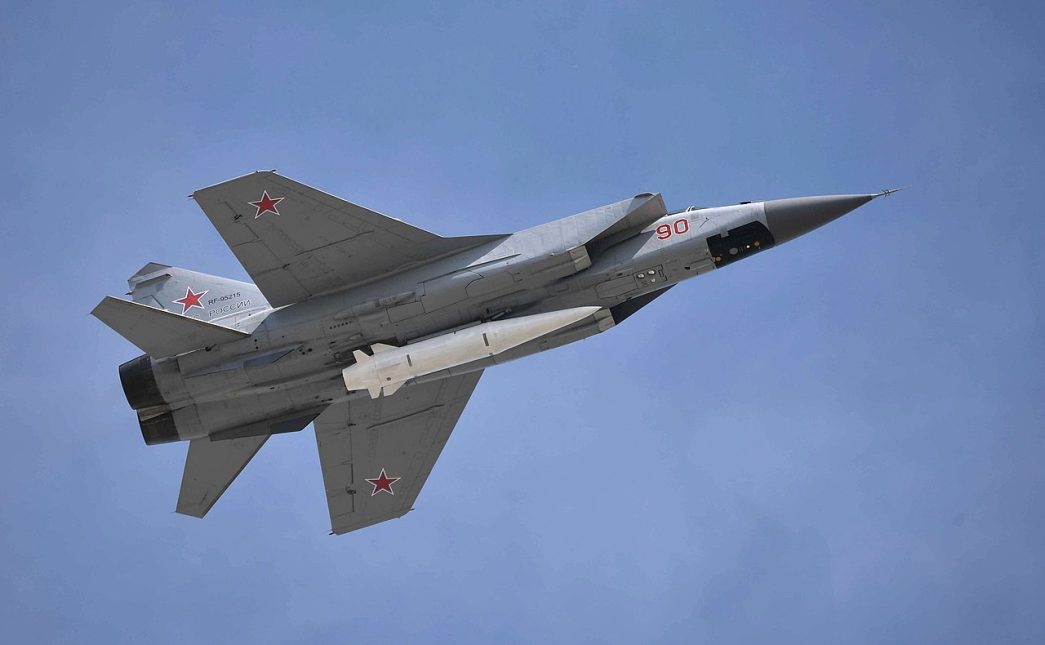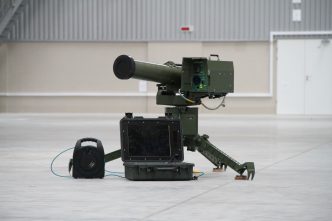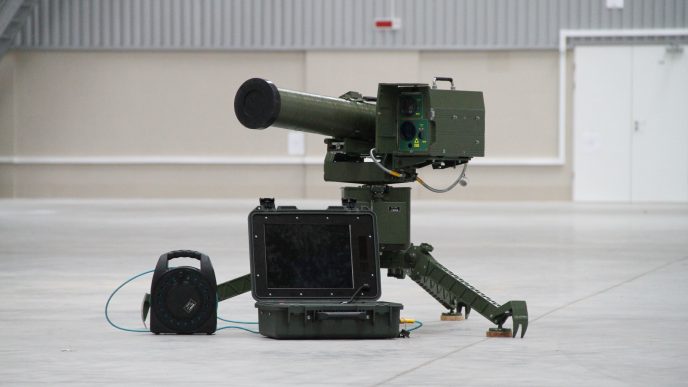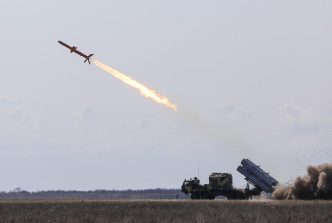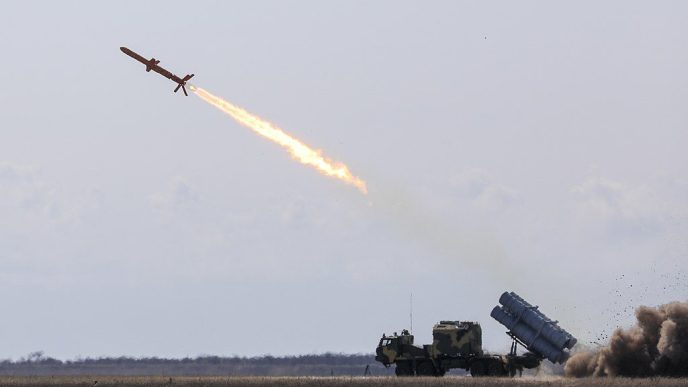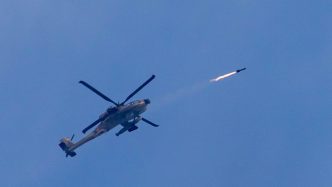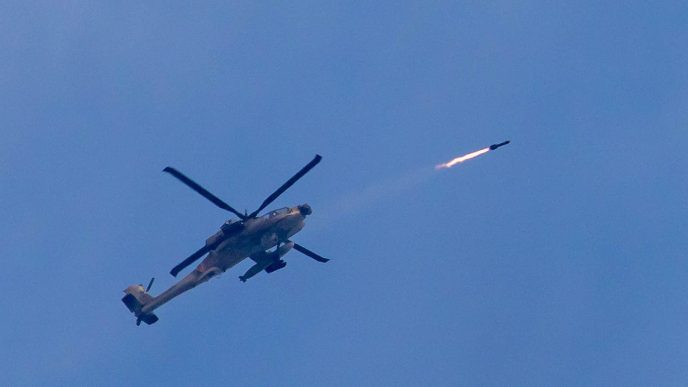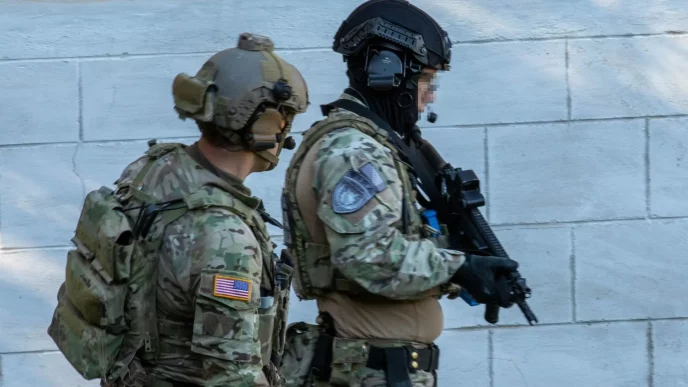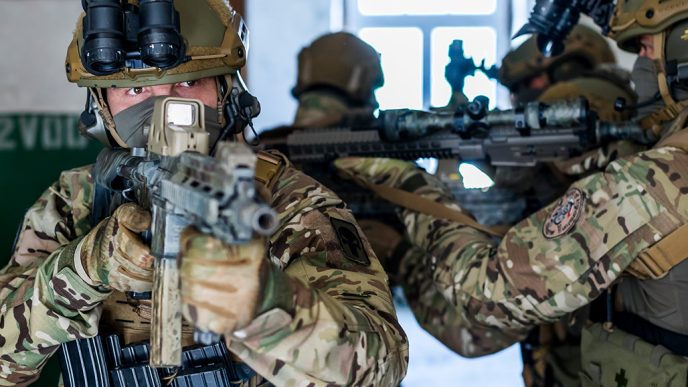The Kh-47M2 Kinzhal is a nuclear-capable, new-generation nuclear-capable hypersonic aero-ballistic air-to-surface missile developed by Russia. Although the technical specifications are confidential, it is estimated that the missile range is somewhere between 2000 to 3000 kilometers with Mach 12 speed (2.5 mi/s), depending on the launch platform.
Introduction
Kinzhal means dagger in Russian, and NATO assigned reporting name Killjoy for this missile. It is different from other air-to-surface missiles because it can perform evasive maneuvers at every stage of its flight, allegedly making it an impossible target for missile defense systems. Kinzhal can carry conventional and nuclear warheads and can be launched from Tu-22M3 bombers (distance up to 3,000 km; 1,900 miles; 1,600 nautical miles) or MiG-31K interceptors (distance up to 2,000 km; 1,200 miles; 1,100 nautical miles).
The Kinzhal entered service in late 2017 as one of the six new Russian strategic weapons unveiled by Russian President Vladimir Putin on March 1, 2018. So far, the Kh-47M2 Kinzhal missile has been deployed at air bases in Russia’s Southern Military District and Western Military District.
Design
The primary objective of the Kinzhal missile is to be used against NATO warships and to destroy NATO missile defense systems, ballistic missile defense ships, and all vital land objects close to European Russia and its Russian borders.
According to the Russians, it is allegedly capable of evading and overcoming any of the world’s air or missile defense systems, including the MIM-104 Patriot, Terminal High Altitude Area Defense, and Aegis Combat System. Rather than using the more recent hypersonic glide and scramjet missile designs, it uses the more classical ballistic missile technology at greater speeds.
The missile’s overall design is shared with the 9K720 Iskander, and the guidance section is modified for this missile. It can hit static and mobile targets such as aircraft carriers. Because it flies at hypersonic speeds within the atmosphere, the air pressure in front of it forms a plasma cloud as it moves, absorbing radio waves (Plasma stealth). The high speed of the Kinzhal gives it better target-penetration characteristics than lighter, slower cruise missiles.
With advanced maneuvering capabilities, high precision, and hypersonic speed, some sources give it the name “carrier killer” due to its alleged ability to disable and possibly even sink a 100,000-ton supercarrier with a single strike. With a mass of 2,000 kg (4,400 lb) and a speed of Mach 12 (including 500 kg warhead and the other parts of the missile), the Kinzhal has more than 16.9 gigajoules of kinetic energy or the equivalent of 4,000 kg of TNT.
Operational history
During the 2022 Russian invasion of Ukraine, the Russian military said it used Kinzhal missiles to destroy an alleged underground weapons depot of the Ukrainian armed forces in Deliatyn on March 18, 2022, and a fuel depot in Konstantinovka the next day.
“As you all know, it’s a consequential weapon but with the same warhead on it as any other launched missile. It doesn’t make that much difference, except it’s almost impossible to stop it.”
United States President Joe Biden
Russian Forces reportedly used it again on April 11. On May 9, according to reports, Russian Tu-22 aircraft launched three Kinzhal-type missiles at targets in the port city of Odesa.
Should we need to be afraid?
From the American perspective, this makes it a tactical missile. Its range doesn’t allow it to be used against the North American mainland. Even in the case of a nuclear world war, it’s unlikely the Kinzhal will be used against strategic targets in the continental US. They can be, however, used against European targets and overseas US bases and assets.
Yes, there’s indeed little defense against hypersonic missiles. They are difficult to detect and intercept. For that matter, even older supersonic cruise missiles are damn hard to stop. A barrage of Kinzhals against any target guarantees one or more hits.
Western counterpart?
The US developed a Kinzhal-like missile and abandoned these plans over 50 years ago. The GAM-87 Skybolt was even faster than Kinzhal and could carry a nuclear warhead. It was withdrawn after the advent of SLBMs. Kinzhal is just an air-launched ballistic missile, nothing special, and it would probably be intercepted by THAAD or Aegis, despite the Russian claims.

Technical specifications
| Country of origin: | Russia |
| Manufacturer: | classified |
| Production: | 2017-present |
| Unit cost: | classified |
| Mass: | classified |
| Length: | classified |
| Diameter: | classified |
| Engine: | Solid fuel rocket engine |
| Operational range: | – 2,000 km (1,200 mi) (MiG-31K) – 3,000 km (1,900 mi) (Tu-22M3) |
| Warhead: | Nuclear (100–500 kT) or HE fragmentation |
| Warhead weight: | up to 500 kg (1,100 lb) |
| Maximum speed: | Mach 10 – Mach 12 (12,300–14,700 km/h; 7,610–9,130 mph; 3.40–4.08 km/s) |
| Guidance system: | INS with the possibility of adjustments from GLONASS, remote control, and optical homing system |
| Launch platform: | MiG-31K, Tu-22M3M (4 missiles), Su-57, tripods |
